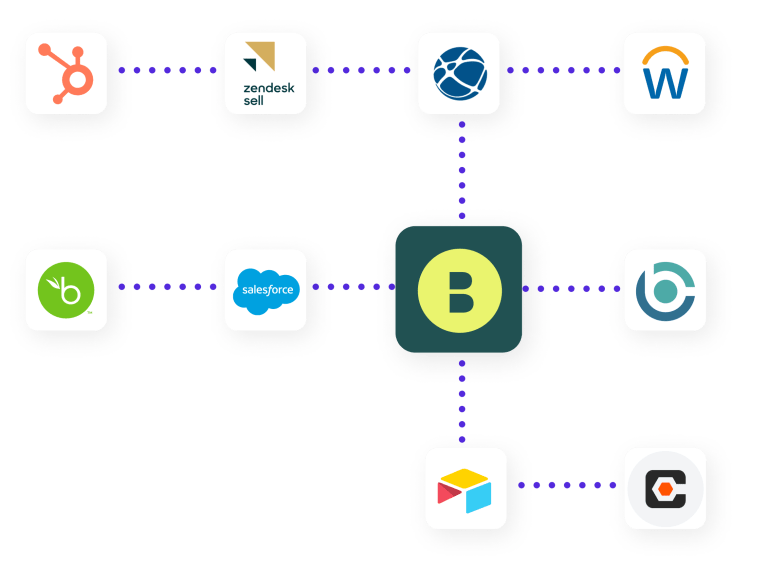Creating transparency in any workplace can often be considered a daunting task. Construction is no exception. Leadership and management are constantly trying to balance how much their team needs to know, how accessible their data should be, and how controls over that data should be implemented. When considering making company data, decision-making processes, and strategies more accessible to your team, it’s important to remember that although embracing transparency in the workplace may not be easy, the benefits far outweigh the negatives.
Table of Contents
In this article, we’ll explore the benefits of a transparent workplace and offer some tips to help increase it. Let’s start with a quick definition.
What is workplace transparency?
In its simplest form, a transparent workplace encourages open and honest communication between company leadership, managers, and team members. The goal is to create a culture that supports a flow of information between different individuals and teams. When applied to resource management and workforce planning, this means being open and honest about resource allocation strategies and providing a window into leadership’s decision-making process. It is an ongoing process that, when maintained, can significantly impact an organization’s success.
What are the benefits of workplace transparency?
Achieving increased team engagement
A study about employee engagement by the Harvard Business Review revealed that just over 70% of employees surveyed reported that they feel more engaged with their organization’s processes and strategies when leadership and management consistently update their teams and clearly communicate company strategy and decision-making processes. Increasing transparency is one of the quickest ways to build trust with your team.
Being able to implement a better, informed leadership
Construction projects have many moving parts, and information between departments can quickly become siloed. This prevents leadership from having a holistic view of everything they need to make the best decisions regarding their workforce allocations. When you try to maintain a transparent working environment, your leadership and project management teams gain a better, more accurate understanding of company culture and internal politics. When everyone is in the loop about your company’s challenges, they’re more likely to support any hard decisions that must be made better.
Developing new methods of problem-solving
Increasing transparency around resource management and workforce planning allows team members to contribute their expertise to the discussion. Project Managers and Superintendents understand what strategies will and will not work when translated to the job site. When your team feels more involved in the decision-making process, it can lead to new ways to solve problems the leadership team may have missed or overlooked.
Striving for increased accuracy when goal-setting
When an organization encourages the open sharing of information, it creates a more uniform understanding of company and project goals. Your team will also be able to provide feedback on how realistic those goals are. Ultimately, suppose everyone is upfront about organizational goals and understands the strategy in place to achieve those goals. In that case, they’re more likely to speak up if goals are unattainable and less likely to cut corners to hit specific benchmarks. Learn more about goal setting and construction KPIs (key performance indicators).
How to increase workforce planning transparency
So, we’ve defined workplace transparency and discussed some of the benefits of improving it. The next step is exploring exactly how to improve it. As was mentioned earlier, it isn’t an easy task and it isn’t a one-time effort. Improving transparency takes time and a sustained effort to see it through.
Increase accessibility to your information
Many construction firms are still managing their resources using spreadsheets or whiteboards. While spreadsheets can be powerful tools, their controls around sharing information often lead to Ops Managers hesitating to share their somewhat fragile databases openly.
Resource planning tools built for the construction industry, like Bridgit Bench, have considered this hesitation when designing their software and have included creating custom permission groups to better control accessibility. Information is power, and the ability to share information without the risk of human error or unwanted changes allows general contractors to include more team members in the decision-making and problem-solving process.
Let your team guide decision-making (when possible)
Providing your team members with access to your data and insight into your decision-making process is one thing. Having them participate in that process is another. If your team understands your company and project-level goals and strategies, encourage them to contribute new ideas that align with what your company is trying to accomplish. They won’t all be great ideas to start, but problem-solving is a skill that needs to be nurtured, and the more participation you get, the more your team can hone those skills.
Promote a “door’s always open” culture
One of the best ways to improve transparency in your organization is to encourage leadership to keep an open-door policy. It matters less if your team members decide to pop in to ask questions or resolve conflicts and more about creating a culture of being open to conversations with team members at every level. Encourage your team to ask questions, even hold “ask me anything” sessions that allow your team to voice their individual concerns and opinions about your company’s direction, goals, and overall strategy.
Face-to-face (or screen-to-screen) communication
Face-to-face communication can be difficult, given the increased remote work since the coronavirus pandemic. However, when working remotely and dealing with conference calls, all team members should try to have their cameras turned on and be ready to contribute. Remember being told that “90% of communication is through body language alone”? Reading your team’s facial expressions and body language can go a long way in ensuring that everyone is on the same page and that miscommunication is minimized.
Bridgit Bench is the construction industry’s leading resource management and workforce planning tool because we understand the value of creating a transparent workforce plan. We encourage our clients to add as many users as they’d like to the tool and provide them with custom permissions to control how transparent their information is. Transparency is the first step to aligning your team and promoting a collaborative work environment to push your company towards its goals.



